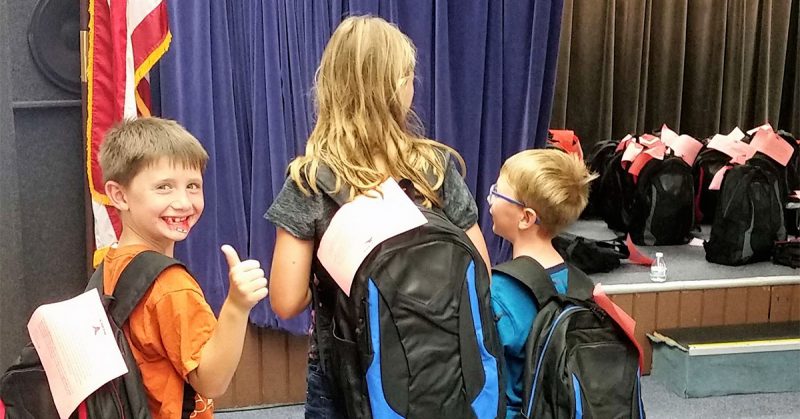It’s PCS season, which means that military kids across the country are preparing to enter a new school. For some students, who move every two to three years, this is a familiar yet dreaded routine. Parents of military kids can’t erase the difficulty of starting over and making new friends … again. However, there are steps you can take to ensure your child’s transition to a new school goes as smoothly as possible.
Before the move to a new school:
- Begin researching early. You can begin learning about a new duty station before your service member has official orders. School options will be directly related to the area where the student lives, so it’s important to research schools and housing options at the same time. You can use websites that provide school “grades” to get a general overview of local options, but do not rely solely on these reports. You will get more detailed feedback by discussing schools with local parents. Try the local base spouse groups or neighborhood groups for more reliable information. You also have the option to call potential schools and speak with the principal or administrator to see if the school is a good fit for your child. Be sure to ask about start and end dates for the school year, the enrollment process, and any requirements for transferring credits.
- Contact a school liaison officer. An SLO (school liaison officer) is a great resource for military families. Contact the SLO at the school you are leaving to gather all essential documents for your student. Then reach out to the SLO at the new location to learn about the local school options, ask questions or get more details about the transfer process. The Department of Defense provides a list of SLO offices at edu.
- Know your student’s rights. The Interstate Compact is a document that protects the rights of military children moving to new school districts, especially across state lines. It details the student’s ability to enroll in the appropriate grade, continue advanced courses they were previously taking, and complete exams or graduate on time. The compact also guarantees that students with special needs can continue to receive necessary treatment and services.

During the move to a new school:
- Hand-carry essential paperwork. When moving to a new location, be sure to gather all the paperwork you will need to register your student at the new school. Do not pack these documents in boxes, because they may be lost in the move. Be sure to include shot records, recent physicals, birth certificates, income verification (service member’s LES), and the school’s application, which can usually be downloaded online. You should also hand-carry the student’s education binder discussed below. Once arriving at the new location, save a copy of the lease or mortgage or a utility bill to show proof of residency.
- Put together an education binder. This should include at a minimum the student’s report cards, any IEP or 504 plan paperwork for the student, input from the classroom teacher, standardized test results, gifted and talented designation, plus samples of recent work. You can also include feedback from coaches or elective class teachers, any awards the student received, reading lists they have completed, and notes from Parent/Teacher conferences. Saving all this information in one place will make it easier to give new teachers and administration a quick overview of your child’s needs and abilities.
- Discuss the school with your child. Depending on their age, your student will have different questions and fears about a new school. Take the time to listen to their concerns and discuss how you can face those challenges together at the new location. Try to put a positive aspect on the move and point out new opportunities, because it’s natural for children to focus on the negative aspects of moving and all that they are giving up. Research sports teams, extracurriculars and clubs that may interest your child and help them make new friends. Set up a tour so they can visit the new school before their first day and talk through their daily routines.
After your child begins at a new school:
- Follow up with teacher conferences. You do not need to wait until the next scheduled parent/teacher conference to discuss things with your child’s teacher. Set up a meeting with your child’s teacher within the first few weeks of them starting at the new school. This is a good time to discuss any details of military life (moving, deployment, previous duty stations) that may be unfamiliar to the teacher. Verify the student’s placement levels and enrollment in special programs. If you have an education binder for your student, you can discuss any gaps in curriculum that they might miss between schools and decide how to best solve these.
Starting at a new school is a challenge for military students at any age, but with preparation and assistance you can help the process go more smoothly for your child.





